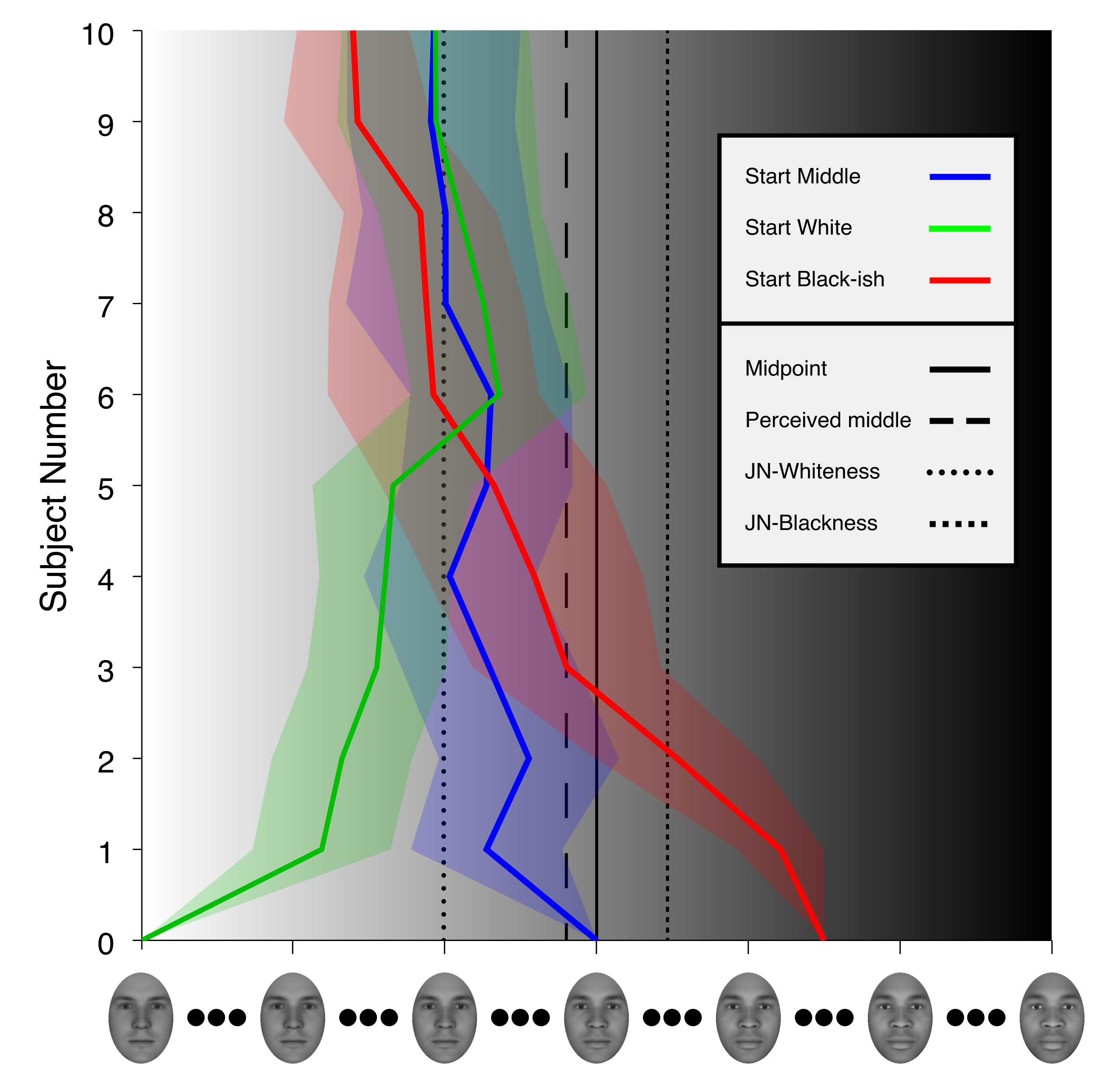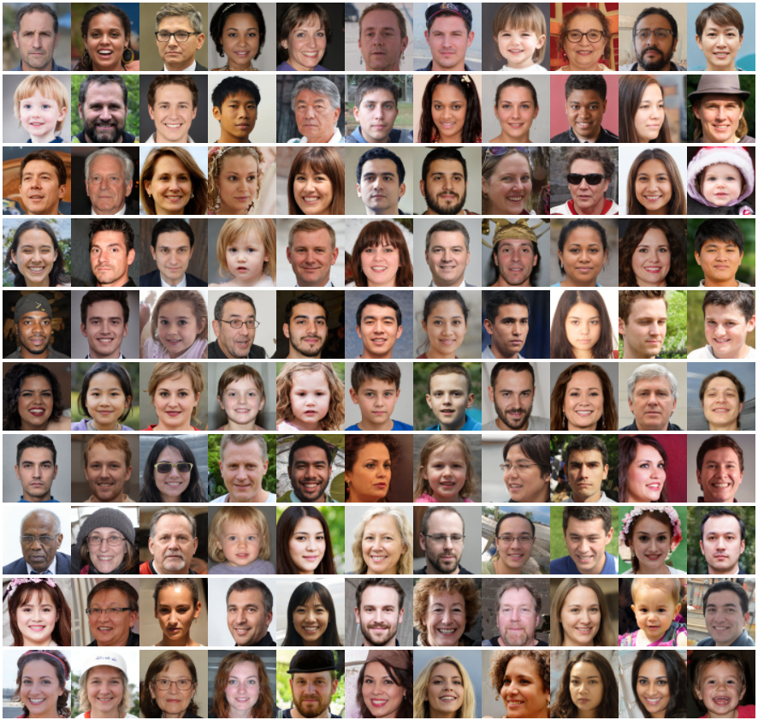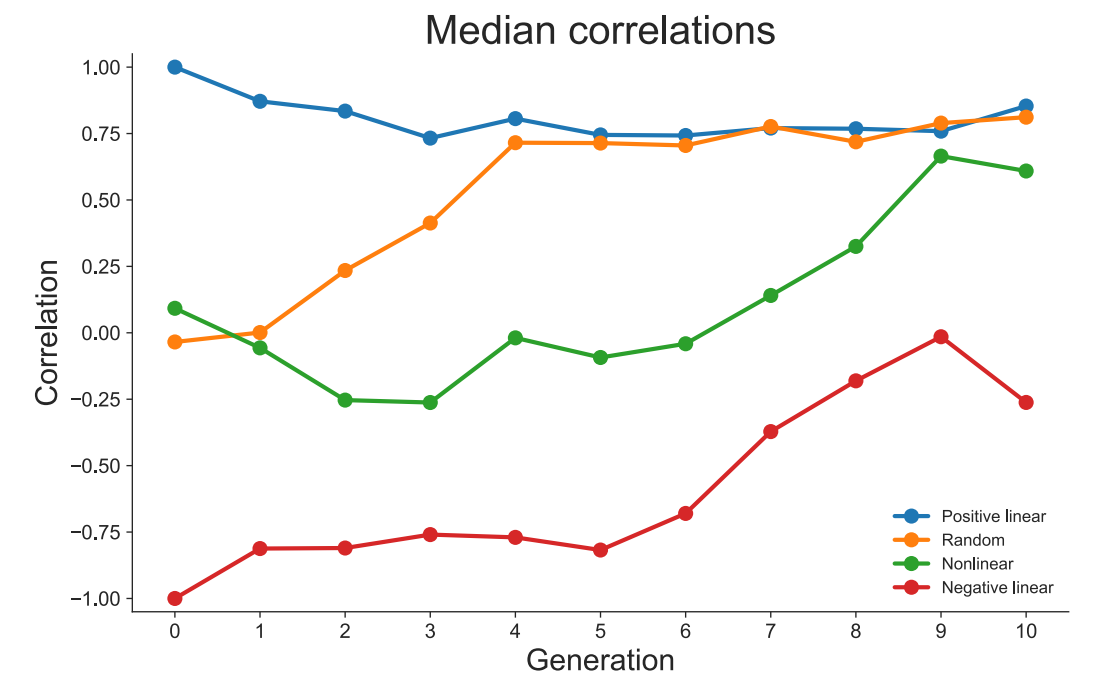Faces are arguably the most important visual stimuli in our social world. How are they encoded and represented in the mind? Our work explores the notion of 'mental defaults' in face space — prioritized regions in the multidimensional space that "pull" encoded representations towards them. Using the method of serial reproduction, we showed that white observers' default face representation is white: even a recognizably Black face is transformed into a recognizably white face within only ten reproductions.


